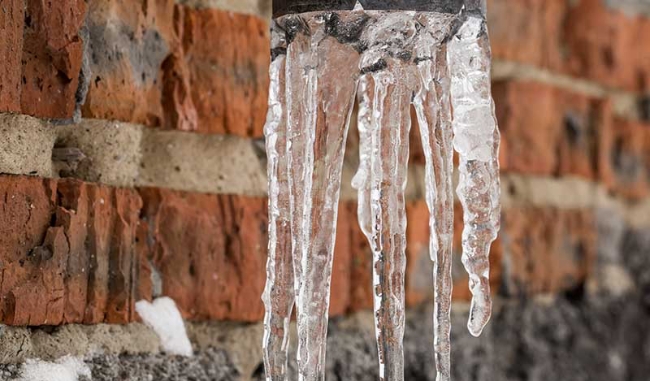Ways to Protect Pipes from Cold Weather: Professional Guidance
Ways to Protect Pipes from Cold Weather: Professional Guidance
Blog Article
What're your ideas on Preventing and dealing with frozen pipes?

Winter can wreak havoc on your plumbing, particularly by freezing pipes. Below's just how to stop it from occurring and what to do if it does.
Introduction
As temperature levels drop, the risk of frozen pipes rises, possibly causing costly repairs and water damage. Comprehending exactly how to stop icy pipelines is crucial for house owners in chilly environments.
Understanding Frozen Pipelines
What causes pipelines to freeze?
Pipelines ice up when revealed to temperatures listed below 32 ° F (0 ° C) for prolonged durations. As water inside the pipes ices up, it expands, taxing the pipe wall surfaces and potentially creating them to rupture.
Dangers and problems
Icy pipes can bring about water interruptions, home damage, and expensive repair work. Ruptured pipelines can flooding homes and trigger comprehensive structural damages.
Signs of Frozen Pipes
Determining frozen pipes early can stop them from rupturing.
Just how to determine frozen pipes
Look for reduced water circulation from taps, uncommon odors or noises from pipelines, and visible frost on subjected pipelines.
Avoidance Tips
Insulating vulnerable pipelines
Cover pipes in insulation sleeves or utilize warm tape to secure them from freezing temperature levels. Concentrate on pipes in unheated or external areas of the home.
Home heating techniques
Maintain interior rooms effectively warmed, specifically areas with plumbing. Open up cabinet doors to allow warm air to distribute around pipes under sinks.
Securing Outdoor Pipes
Garden hose pipes and exterior taps
Disconnect and drain pipes yard hose pipes before winter. Install frost-proof spigots or cover exterior taps with shielded caps.
What to Do If Your Pipes Freeze
Immediate actions to take
If you believe icy pipelines, maintain faucets open to eliminate pressure as the ice melts. Make use of a hairdryer or towels soaked in warm water to thaw pipelines gradually.
Long-Term Solutions
Architectural adjustments
Think about rerouting pipelines far from exterior wall surfaces or unheated areas. Include additional insulation to attic rooms, cellars, and crawl spaces.
Updating insulation
Purchase high-grade insulation for pipes, attic rooms, and wall surfaces. Appropriate insulation aids maintain consistent temperature levels and lowers the risk of frozen pipes.
Verdict
Preventing icy pipelines requires positive actions and quick reactions. By comprehending the reasons, signs, and safety nets, homeowners can protect their pipes throughout cold weather.
5 Ways to Prevent Frozen Pipes
Drain Outdoor Faucets and Disconnect Hoses
First, close the shut-off valve that controls the flow of water in the pipe to your outdoor faucet. Then, head outside to disconnect and drain your hose and open the outdoor faucet to allow the water to completely drain out of the line. Turn off the faucet when done. Finally, head back to the shut-off valve and drain the remaining water inside the pipe into a bucket or container. Additionally, if you have a home irrigation system, you should consider hiring an expert to clear the system of water each year.
Insulate Pipes
One of the best and most cost-effective methods for preventing frozen water pipes is to wrap your pipes with insulation. This is especially important for areas in your home that aren’t exposed to heat, such as an attic. We suggest using foam sleeves, which can typically be found at your local hardware store.
Keep Heat Running at 65
Your pipes are located inside your walls, and the temperature there is much colder than the rest of the house. To prevent your pipes from freezing, The Insurance Information Institute suggests that you keep your home heated to at least 65 degrees, even when traveling. You may want to invest in smart devices that can keep an eye on the temperature in your home while you’re away.
Leave Water Dripping
Moving water — even a small trickle — can prevent ice from forming inside your pipes. When freezing temps are imminent, start a drip of water from all faucets that serve exposed pipes. Leaving a few faucets running will also help relieve pressure inside the pipes and help prevent a rupture if the water inside freezes.
Open Cupboard Doors
Warm your kitchen and bathroom pipes by opening cupboards and vanities. You should also leave your interior doors ajar to help warm air circulate evenly throughout your home.

We hope you enjoyed our excerpt about 6 Ways to Prevent Frozen Pipes. Thanks for taking time to browse our posting. Are you aware of somebody else who is excited about the topic? Why not promote it. Thanks so much for your time invested reading it.
Explore Now Report this page